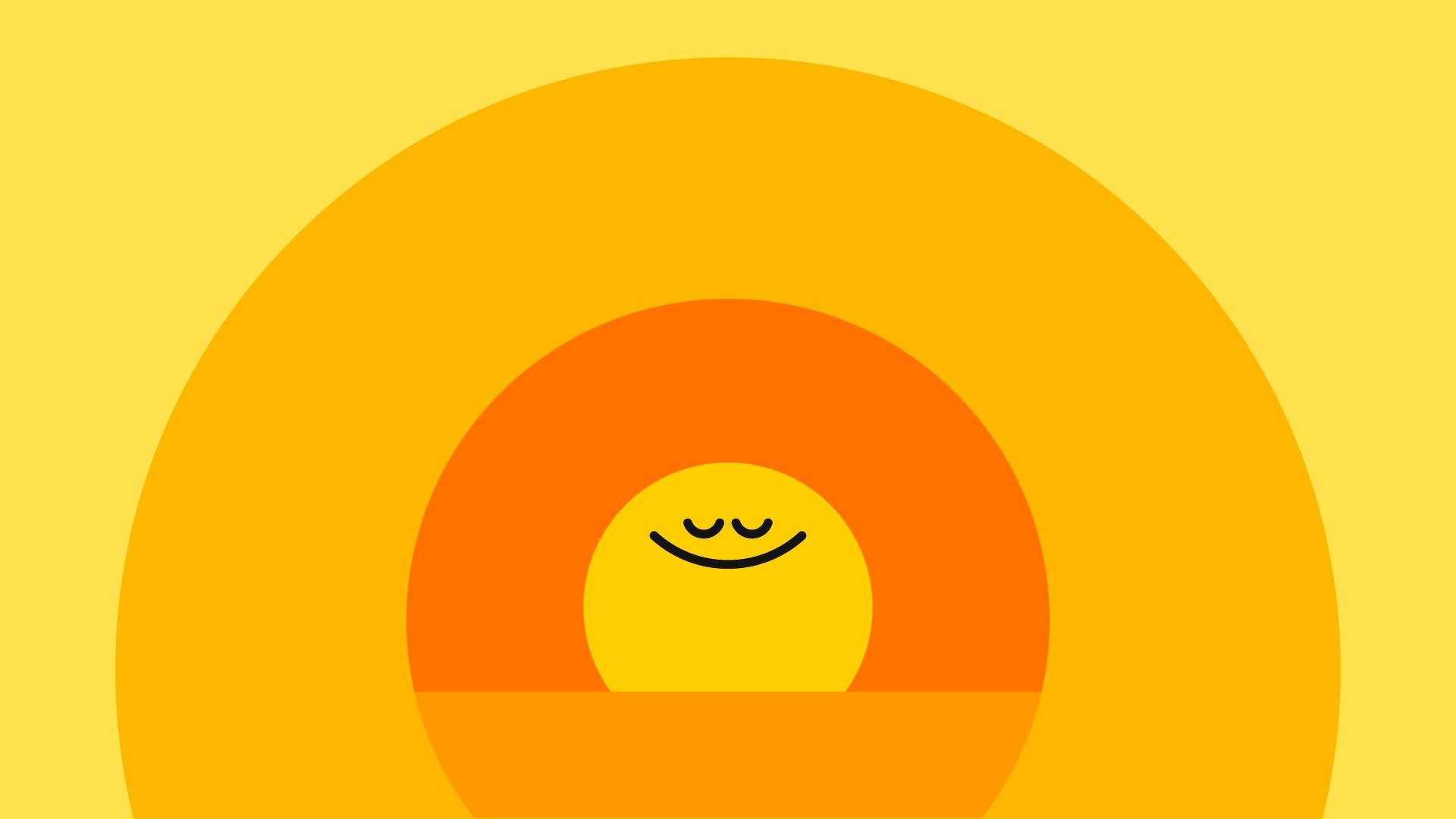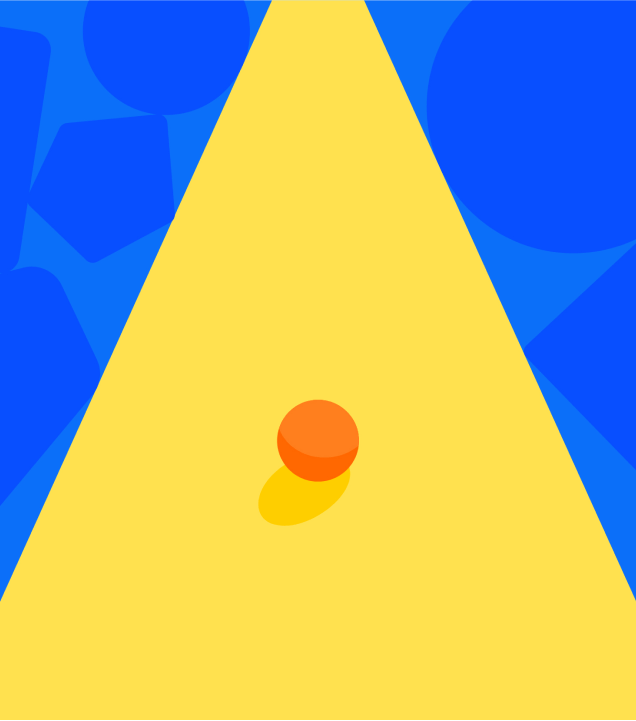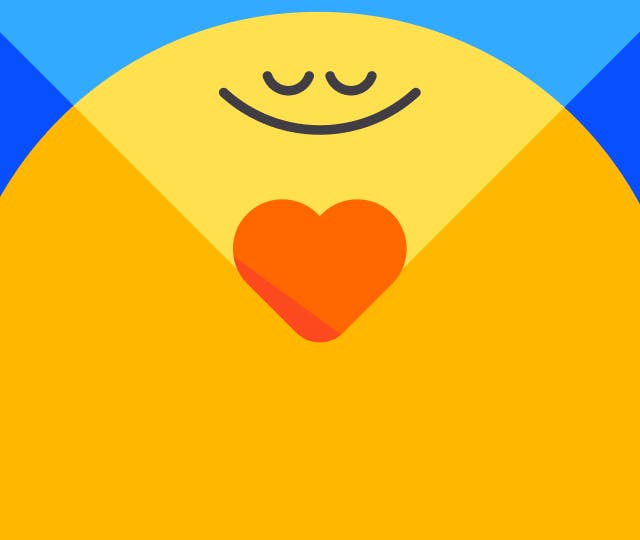What is meditation?
Researched and Written by Headspace Editorial Team
Jun 25, 2025
Meditation isn’t about becoming a different person, a new person, or even a better person. It’s about training in awareness and getting a healthy sense of perspective. You’re not trying to turn off your thoughts or feelings. You’re learning to observe them without judgment. And eventually, you may start to better understand them as well.
What is mindfulness?
Mindfulness is the ability to be present, to rest in the here and now, fully engaged with whatever we’re doing in the moment.

Meditation is a skill
Learning to meditate is like learning any other skill. Think of it like exercising a muscle that you’ve never really worked out before. It takes consistent practice to get comfortable. And it’s usually easier if you have a teacher. Headspace has got you covered there.
Simple meditation techniques for beginners
Starting a meditation practice doesn’t have to be complicated. It shouldn’t feel like another item on your to-do list. Just a few minutes of calm can go a long way. The key is to begin gently, with techniques that are simple, approachable, and easy to weave into your day.
One of the easiest places to start is with your breath. You don’t need to change anything. Just notice each inhale and exhale. When your mind wanders (because it will), simply return your focus to the breath. That act of coming back is the practice.
Another beginner-friendly breathwork exercise is a body scan. A body scan meditation involves slowly bringing attention to different parts of the body, from head to toe, and noticing any tension, warmth, or sensation without judgment. It’s a grounding way to connect with the present moment.
If sitting in stillness feels intimidating, guided meditations can offer a helpful starting point. A calming voice walks you through the process step by step, so you never feel unsure of what to do next. Whether it’s a few deep breaths or a quiet moment before bed, every bit of practice counts.
Remember, there’s no “perfect” way to meditate. Start small — even one minute is enough — and let your practice grow in a way that feels good for you. Discover how to relax and other quick tips to get the most out of your practice.
Common Meditation Questions
6 minutes
The benefits of regular meditation practice
The benefits of daily meditation can have a lasting impact, not just on how you feel in the moment, but on your overall well-being over time. When practiced consistently, meditation becomes more than a moment of calm; it’s a sustainable tool for navigating life’s ups and downs with greater ease.
Research continues to show that regular meditation can help reduce stress, support emotional balance, and improve mental clarity. In fact, studies have linked mindfulness practices to lower levels of the stress hormone cortisol and decreased activity in the brain’s “fight or flight” center, the amygdala. At the same time, areas of the brain associated with focus, memory, and emotional regulation can actually strengthen with practice.
Beyond science, many people notice real-life shifts: a bit more patience in a tough conversation, fewer racing thoughts before bed, or a greater sense of grounding during the day. Mindfulness meditation is known to help improve focus and increase awareness of thoughts and feelings. This creates space to respond with intention rather than react out of habit.
The best part? These benefits of daily meditation build with time. Just like any habit, the more you practice, the more natural it begins to feel. Whether you're looking to feel less overwhelmed or simply create more room to breathe, a regular meditation practice can support you in living with greater clarity, calm, and connection.
How to meditate in just five minutes
Finding time to meditate can feel challenging, but the great news is that meditation doesn’t have to take long to be effective. Five minutes is all it takes to start feeling the benefits of mindfulness, and it’s a manageable way to fit meditation techniques into even the busiest of schedules.
Here’s how to get started:
- Find a quiet spot: Whether it’s a comfy chair, a peaceful corner, or even your car before you head into work, take a moment to settle in.
- Focus on your breath: Close your eyes and take a few slow, deep breaths. Notice the air as it enters and leaves your body. If your mind starts to wander, gently guide your attention back to your breath.
- Try a short body scan: Starting from the top of your head, slowly bring awareness to each part of your body, working your way down. Notice any tension or sensations, and simply let them be. This can be a great way to release stress in just a few minutes.
It's meditation practice, not meditation perfect
There’s no such thing as perfect meditation. Sometimes your focus will wander or you’ll forget to follow your breath. That’s OK. It’s part of the experience. What’s most important is to meditate consistently. It’s one of those things where the journey is more important than the destination.The mind can be a weird place
It takes time to get comfortable with your mind. There might be setbacks along the way, but that’s part of meditating. Keep practicing. You’re doing great just by showing up. Sign up for Headspace for free, and start reaping the benefits of meditation today.Even a short meditation session like this can help reduce stress, improve mental clarity, and refresh your mind. Our Headspace mental health app is the perfect place to get started. It’s a simple but powerful tool for making mindfulness a natural part of your day. And remember, the goal isn’t perfection, it’s simply to be present and allow yourself a moment of peace.
Meditation FAQs
What's the best time to meditate?
We recommend meditating first thing in the morning if you can. In fact, most people find the morning the best time to meditate, as it sets a calm and focused tone for the day ahead. The most important thing is to pick a time that works for you and try to consistently meditate at that time.
How do I find time to meditate?
When it comes to finding your meditation time, try to anchor your practice to another part of your routine, like brushing your teeth. Wake up and think: meditate, brush teeth, drink coffee. And don’t be frustrated if you miss a session. It happens. Just start right up again the next day.
Where should I meditate?
No need to hike to the nearest mountaintop. Any reasonably quiet, comfortable place where you’re not likely to be interrupted is just fine.
What should I wear to meditate?
You can wear whatever you like, as long as you’re comfortable. It also helps to remove uncomfortable shoes and loosen tight clothing, like ties or belts, if they’re bothering you.
How do I sit during meditation?
When it comes to finding the best meditation positions, sit in the middle of a chair with your legs uncrossed, feet flat on the floor, and hands resting on your legs or on your lap. The important thing is to set your body up in a way that your muscles are able to switch off and relax.
Can I meditate lying down?
We generally recommend sitting instead of lying down. However, if sitting upright is too painful or uncomfortable, you can meditate lying down. Try placing a thin pillow under your head and bending your knees so your feet are flat on the floor. It’ll help protect your lower back.
Is there a particular way I should breathe?
As you start your practice, you might wonder if there is a wrong way to meditate. The answer is no. When we meditate, we’re not trying to breathe in a special way. Although it is recommended to ground yourself before meditation with a few inhales and exhales, you should listen to your body and do what feels natural.
How do I start meditating again after a break?
It really depends on how long you’ve been away. If it’s only been a few days, just pick up right where you left off. If it’s been at least a week, we recommend restarting the pack. If it’s been more than a month, you should complete our popular Learn the Basics of Meditation course before restarting a meditation practice.
Ready to start your meditation practice?
Meditation doesn’t have to be complicated or time-consuming. It just takes a little curiosity and a willingness to show up for yourself. Whether you’re looking to learn how to stop worrying, how to manage stress, or simply how to be more present, Headspace is here to support you every step of the way.
With guided meditations, mindful breathing exercises, and beginner-friendly meditation resources, you’ll find everything you need to build a practice that works for you. Start small, stay consistent, and see where the journey takes you. Get started with the Headspace app today.
Sources:
Pascoe, M. C., Thompson, D. R., Jenkins, Z. M., & Ski, C. F. (2017). Mindfulness mediates the physiological markers of stress: Systematic review and meta-analysis. Journal of psychiatric research, 95, 156–178. https://doi.org/10.1016/j.jpsychires.2017.08.004. Accessed on June 10, 2025.
Rogerson, O., Wilding, S., Prudenzi, A., & O'Connor, D. B. (2024). Effectiveness of stress management interventions to change cortisol levels: a systematic review and meta-analysis. Psychoneuroendocrinology, 159, 106415. https://doi.org/10.1016/j.psyneuen.2023.106415. Accessed on June 10, 2025.


Be kind to your mind
- Access the full library of 500+ meditations on everything from stress, to resilience, to compassion
- Put your mind to bed with sleep sounds, music, and wind-down exercises
- Make mindfulness a part of your daily routine with tension-releasing workouts, relaxing yoga, Focus music playlists, and more


Stay in the loop
Be the first to get updates on our latest content, special offers, and new features.
By signing up, you’re agreeing to receive marketing emails from Headspace. You can unsubscribe at any time. For more details, check out our Privacy Policy.
- © 2026 Headspace Inc.
- Terms & conditions
- Privacy policy
- Consumer Health Data
- Your privacy choices
- CA Privacy Notice







